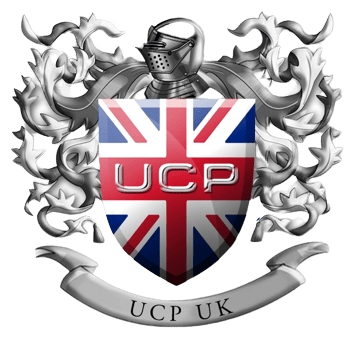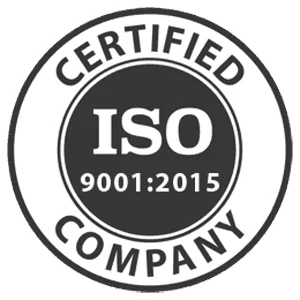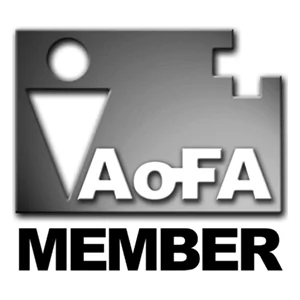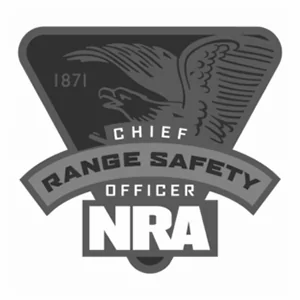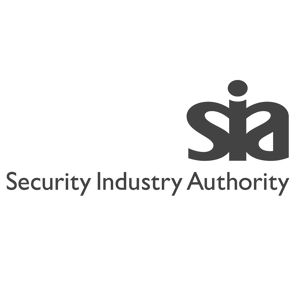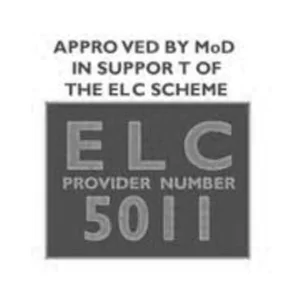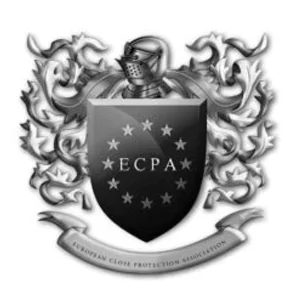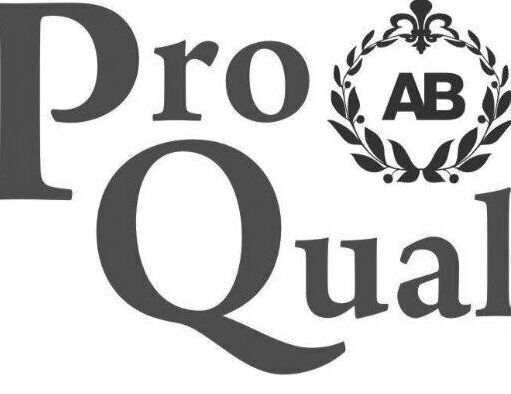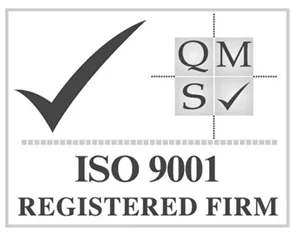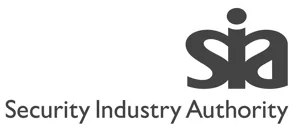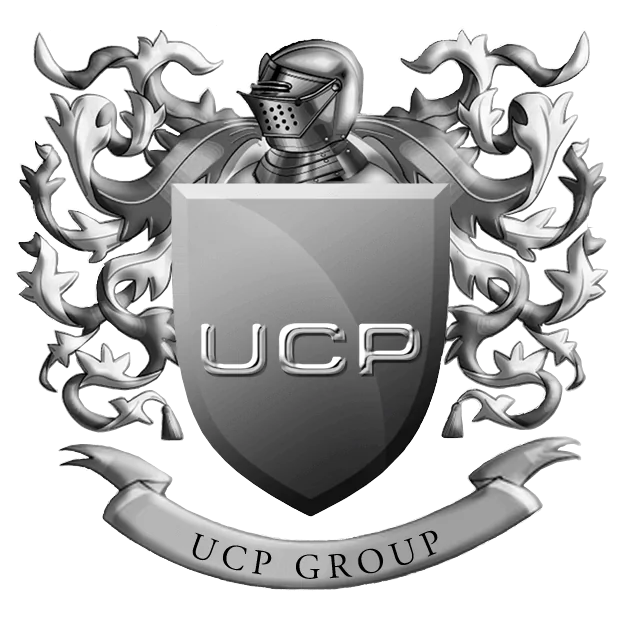COURSE INFORMATION
The Level 3 NVQ Certificate in Occupational Health and Safety qualification is aimed at candidates working as a health and safety practitioner, in a position of responsibility for the health, safety and welfare of a team or organisation. The qualification is generic and appropriate for individuals working in a range of sectors.
The awarding body for this qualification is ProQual Awarding Body and the regulatory body is the Office of Qualifications and Examinations Regulation (Ofqual). The specification for these qualifications has been approved by the Council for the Curriculum Examinations and Assessment (CCEA) for use by centres in Northern Ireland.
This qualification has been accredited onto the Regulated Qualifications Framework (RQF).
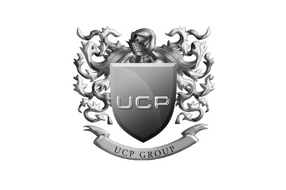
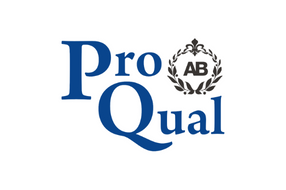
ENTRY REQUIREMENTS
Candidates must have good command of English language(reading & writing)
QUALIFICATION STRUCTURE
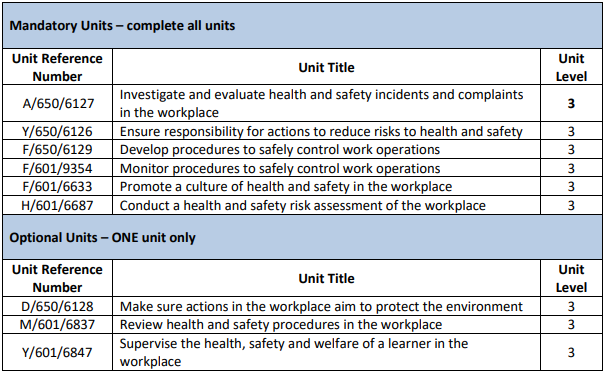
WHAT’S INCLUDED:
- instructor
- Training equipment
- Exams
- Awards
- Classroom
- Range (where applicable)
- Ammo (where applicable)
WHAT IS NOT INCLUDED:
- Accommodation (where applicable)
- Food and beverages
- Flights (where applicable)
- Airport Transfers (where applicable)
- Safety Glasses (where applicable)
- Ear Defenders (where applicable)
Course Cost
£800
Award
ProQual Level 3 NVQ Certificate in Occupational Health and Safety
Location
UK, Europe, USA, and Thailand
Course Dates
Any time of the month
Assessments
There must be valid, authentic and sufficient for all the assessment criteria. However, one piece of evidence may be used to meet the requirements of more than one learning outcome or assessment criterion.
QUALIFICATION STRUCTURE
Unit A/650/6127
INVESTIGATE AND EVALUATE HEALTH AND SAFETY INCIDENTS AND COMPLAINTS IN THE WORKPLACE
Learning Outcome – The learner will: | Assessment Criterion – The learner can:
- be able to investigate and report workplace incidents and complaints in accordance with workplace requirements.
1.1 establish prior to the investigation: all sources of information available for workplace investigations and select those appropriate/relevant to the incident.
1.2 carry out an investigation by gathering accurate and comprehensive recorded information from those involved, ensuring an understanding about the process which allows for supportive working relationships.
1.3 identify inconsistencies in the investigation together with common and recurring themes.
1.4 prepare a report containing details of incidents and complaints and forward to those requesting it in the agreed format, timescale and accordance with regulatory and workplace requirements
2. be able to make recommendations as a result of workplace investigations
2.1 recommend improvements to health and safety based on accurate and detailed analysis of reports, advice, and support material collected during the investigation.
2.2 develop recommendations which comply with:
a) current working practices
b) relevant legislation and workplace health and safety instructions.
2.3 propose recommendations for improving health and safety, which are workable and include measures for review.
2.4 present recommendations to the appropriate people with realistic and achievable plans for implementing them.
2.5 produce an action plan to include a review process for checking implementation of the recommendations.
3. know the employers’ and employees’ legal responsibilities for health and safety in the workplace.
3.1 explain the responsibilities of employers and employees for health and safety as defined by legislation, to include:
a) own capabilities and scope in own job role.
b) the work areas and job roles where the learner is carrying out the investigation.
3.2 explain the workplace requirements for conducting and reporting investigations including:
a) what hazards may exist in the workplace
b) the importance of dealing with and promptly
reporting risks
c) workplace budgets in relation to carrying out
an investigation
d) roles of external regulatory and research
organisations.
3.3 explain how to write actions plans and:
a) apply analytical techniques
b) requirements for maintaining confidentiality
of reports.
Unit Y/650/6126
ENSURE RESPONSIBILITY FOR ACTIONS TO REDUCE RISKS TO HEALTH AND
SAFETY
Learning Outcome – The learner will: | Assessment Criterion – The learner can:
- be able to identify and appropriately deal with hazards and risks arising from working practices and work environment not covered by workplace risk assessment.
1.1 identify workplace instructions and practices that are relevant to them and their job role.
1.2 report differences, recurring themes, or inconsistencies in the appropriate and accepted workplace process to the correct people.
2. be able to reduce the risks to health and safety in the workplace.
2.1 perform work activities at a level of competence required for the job role
2.2 recognise limitations in own competencies through self-assessment and appraisal.
2.3 set personal goals that are acknowledged within the organisation.
3. acknowledge the importance of the needs and requirements of the people at the workplace.
3.1 explain the importance of acceptable
workplace welfare provision to all
within the organisation.
3.2 determine additional requirements for those identified as or who may be vulnerable.
3.3 monitor the effectiveness of provision and report any changes against relevant policies and controls.
3.4 report any differences in policy and actual provision in line with the business strategy, promoting the benefits of improved occupational safety and health.
3.5 describe the impact of consequences of change.
4. be able to communicate workplace findings in line with the accepted standards.
4.1 explain their responsibility in remaining alert to workplace hazards and risk.
4.2 describe own responsibilities and scope for action.
4.3 explain how to promote health and safety information to organisational stakeholders at all levels.
4.4 explain the importance of adhering to health and safety policies and practices.
4.5 describe where and when to get additional health and safety assistance.
Unit F/650/6129
DEVELOP PROCEDURES TO SAFELY CONTROL WORK OPERATIONS
Learning Outcome – The learner will: | Assessment Criterion – The learner can:
1. be able to develop procedures for maintaining a healthy and safe workplace
1.1 identify existing health and safety procedures
1.2 agree realistic objectives for maintaining a healthy and safe workplace for everyone
1.3 develop health and safety procedures which:
a) are based on risk assessment and consultation
b) meet legal requirements
c) are appropriate to the type of work carried out and to the workplace
d) identify individuals to whom people must report incidents and health and safety risks, and who they can go to for first aid.
1.4 develop a health and safety training plan to include the performance indicators for the organisation, underpinning health and safety legislation and regulation
1.5 disseminate the Health and Safety training plan to those in the workplace with consideration to workload priorities to those affected.
2. be able to review the effectiveness of health and safety procedures in the workplace.
2.1 identify changes in the workplace and legal requirements to current health and safety procedures.
2.2 provide other people with opportunities to give feedback about current health and safety procedures.
2.3 review all relevant health and safety reports and data to identify any opportunities to improve workplace health and safety procedures.
2.4 identify and obtain feedback and advice from reliable sources of expertise.
2.5 record accurately:
a) the details of any review carried out
b) how the review meets legal responsibilities
c) how the review meets the requirements of workplace instructions
3. be able to communicate health and safety procedures to others in the workplace.
3.1 report the results of own review to the relevant people.
3.2 alert everyone in the workplace, promptly, to the revised health and safety procedures.
3.3 set effective measures for monitoring the revised health and safety procedures.
4. know the legal responsibilities for health and safety.
4.1 identify responsibilities for health and safety as
required by:
a) current legislations
b) legislation covering own job role
c) the particular health and safety risks present in own job role and the precautions to be taken
d) the specific organisational health and safety instructions for own job role.
4.2 explain the importance of:
a) remaining alert to hazards in the workplace.
b) dealing with and promptly reporting risks.
c) knowing the hazards that exist in the workplace.
d) the specific organisational health and safety instructions for own job role including that as ‘trusted advisor’ where appropriate to senior team members
4.3 explain own awareness of others in the workplace to include:
a) the roles and responsibilities of others in the workplace
b) commonly used working practices including working with others
c) channels of communication and consultation in the workplace, including senior team members and internal stakeholders.
4.4 explain the need for health and safety information in the workplace to include:
a) the instructions that may be required about health and safety in the workplace.
b) where to find the health and safety information that may be available in the workplace.
c) how to prepare and write specific instructions and procedures.
d) measures to check the different types of health and safety procedures.
Unit F/601/9354
MONITOR PROCEDURES TO SAFELY CONTROL WORK OPERATIONS
Learning Outcome – The learner will: | Assessment Criterion – The learner can:
1. be able to check that health and safety instructions are followed
1.1 keep up to date with health and safety regulations and workplace instructions, making sure that information is from reliable sources.
1.2 conduct monitoring of the workplace at agreed intervals and in accordance with workplace instructions.
1.3 confirm that workers are health and safety competent as defined in their job role and that identified health and safety training needs have been met.
1.4 communicate workplace instructions and receive feedback.
2. be able to recommend changes to health and safety workplace instructions.
2.1 respond to any breaches of health and safety instructions in a way which meets workplace and legal requirements.
2.2 make recommendations for any changes to health and safety workplace instructions to the responsible people.
3. be able to make sure that hazards and risks are controlled safely and effectively.
3.1 maintain accurate records of workplace risks.
3.2 check other people are aware of the hazards/risks and know the action(s) to be taken to minimise them.
3.3 confirm that appropriate precautions to control
risks have been agreed with the people responsible
for health and safety.
3.4 conduct a review to make sure all recommended action has been taken.
3.5 report any conflicts that still exist between
workplace and legal requirements
4. know how to monitor procedures to safely control work operations
4.1 explain employers’ and employees’ legal responsibilities for health and safety in the workplace
4.2 explain the difference between ‘hazard’, ‘risk’ and ‘control’.
4.3 describe the types of information available from reports and records covering the workplace.
4.4 explain the importance of evaluating information from reports and records covering the workplace.
Unit F/601/6633
PROMOTE A CULTURE OF HEALTH AND SAFETY IN THE WORKPLACE
1. be able to develop plans to promote a health and safety culture in the workplace.
1.1 identify where any improvements and changes may be necessary.
1.2 identify how information on health and safety instructions and regulations are currently communicated.
1.3 identify current level of workforce understanding and support for health and safety instructions and procedures.
1.4 develop a plan based on the findings, to include performance measures, review dates and resources.
1.5 plan opportunities for promoting the advantages and legal necessity of following health and safety procedures.
2. implement the plan to promote a health and safety culture in the workplace.
2.1 present the plan to the responsible people for the workplace to gain their support.
2.2 identify those in the workplace who will require information and advice about the plan to promote a health and safety culture in the workplace.
2.3 ensure that relevant information and advice is provided at in a timely way and provide opportunities for encouraging ideas on good practice.
2.4 measure the effectiveness of the plan against past and present performance.
3. be able to monitor and review plan to promote health and safety culture in the workplace
3.1 research and be aware of the legal and moral responsibilities implied.
3.2 instigate performance measures to monitor the effectiveness of the plan and review opportunities for further improvements.
4. know reasons for promoting a health and safety culture in the workplace.
4.1 explain employers, employees and moral and legal responsibilities for health and safety
4.2 explain own legal responsibilities for health and safety in their job role.
4.3 explain how to interpret workplace health and safety data.
4.4 explain how to assess the level of understanding of workplace health and safety data
4.5 identify the information needs of those affected by the plan, to include:
a) sources of information on health and safety
b) the importance of keeping people informed and discussing their involvement
c) the communication and consultation requirements in the workplace.
4.6 explain the awareness of:
a) workplace hazards that exist and the importance of remaining aware of them
b) the importance of dealing with or promptly reporting risks
c)the particular health and safety risks present in own job role and roles of others
d) limitations within own job role
Unit H/601/6687
CONDUCT A HEALTH AND SAFETY RISK ASSESSMENT OF THE WORKPLACE
1. be able to prepare for a workplace risk assessment
1.1 evaluate the workplace to decide areas for risk assessment.
1.2 select the method of hazard identification appropriate to the workplace being assessed and in line with legal requirements.
1.3 list the hazards in a way which meets legal, good practice and workplace requirements.
1.4 recognise own limitations and seek expert advice and guidance on operational controls when appropriate.
2. be able to identify hazards in the workplace
2.1 make sure the hazard investigation fully identifies those areas in the workplace where hazards with a potential for serious harm to health and safety are most likely to occur with impact on:
a) people in the workplace and
b) other people.
3. be able to conduct a risk assessment of the workplace
3.1 carry out risk assessment of the hazards identified using appropriate documentation.
3.2 assess the level of risk and how risks can be controlled to minimise harm.
3.3 assess the level of risk, identifying those that could not be eliminated.
3.4 prioritise hazards which could result in serious harm to people at work and other people.
3.5 identify control measures and implement and record them, include actions with expected completion dates.
3.6 identify changes to policies and practices resulting from the risk assessment.
3.7 deliver findings of the risk assessment with actions identified.
4. be able to review risk assessment.
4.1 instigate a review that compares the latest risk assessment to current workplace and working practices and identify any significant differences between previous and new working practices.
4.2 plan action to be taken resulting from the findings and:
a) identify new hazards arising from change
b) make changes to the risk assessment to include them
c) promptly inform everyone affected by the changes
5. know the employer’s responsibility for risk assessments as required by current legislation.
5.1 explain own responsibilities for health and safety as defined by current legislation and:
a) specific legislation covering own job role.
b) particular health and safety risks which may affect own job role and precautions required.
5.2 identify resources for the risk assessment to take place and:
a) how and where to find expert advice and guidance
b) the work areas and people for whom the learner is carrying out the risk assessment
c) the work activities of the people in the workplace where the learner is carrying out the risk assessment.
5.3 describe the purpose, legal implications and importance of carrying out risk assessments and: a) the methods of identifying hazards including direct observation, examining records and conducting interviews
b) the workplace hazards most likely to cause harm
c) the importance of remaining alert to the presence of hazards in the workplace
d) the importance of dealing with or promptly reporting risks.
5.4 apply effective communication methods.
Unit D/650/6128
MAKE SURE ACTIONS IN THE WORKPLACE AIM TO PROTECT THE ENVIRONMENT
1. be able to identify risks to the environment arising from the workplace.
1.1 identify people in the workplace to whom environmental matters are reported
1.2 confirm they are up to date on environmentally friendly working practices relevant to the workplace.
1.3 identify any current working practices in own job role that could cause harm to the environment.
1.4 identify materials, products or equipment in any part of own job role which could cause harm to the environment.
1.5 report any differences between legal regulations and workplace instructions and the actual use of materials and products hazardous to the environment.
1.6 explain the importance of reporting environmental concerns to the responsible persons and how this is undertaken.
2. be able to minimise the risks to the environment arising from the workplace.
2.1 research the relevant legal requirements and
workplace environmental instructions for own job
role.
2.2 define within own capability and the scope of job responsibilities how to:
a) control the environmental hazards
b) promptly report environmental risks that the learner is unable to deal with
c) pass on suggestions for limiting risks to the environment to the responsible person.
2.3 apply the correct instructions for:
a) handling materials and products that can be harmful to the environment
b) their proper disposal.
3. know the legislation relating to environmental matters that affect own workplace.
3.1 explain own responsibilities for the environment as defined by any specific legislation covering own job role and:
a) responsibility for controlling hazards to the environment
b) particular risks to the environment that may be present in own workplace and job role
c) how to use resources and materials effectively and efficiently
d) the importance of remaining alert to the presence of hazards to the environment in the whole workplace
e) the responsibility for items (materials and equipment) that can be hazardous to the environment
f) the specific workplace environmental instructions covering own job role
g) specific working practices covering own job role.
3.2 discuss the importance of working with stakeholders within the organisation to apply ethical codes and sustainability practice within occupational safety and health.
3.3 describe the substances and processes categorised as hazardous to the environment.
3.4 explain workplace instructions for handling hazards to the environment that the learner is unable to deal with.
Unit M/601/6837
REVIEW HEALTH AND SAFETY PROCEDURES IN THE WORKPLACE
Learning Outcome – The learner will: | Assessment Criterion – The learner can:
1. be able to undertake a review of health and safety in the workplace.
1.1 obtain authorisation for the review from the person responsible for the workplace.
1.2 agree work schedule, purpose, scope, timescales and priorities for the review with the responsible person for the workplace.
1.3 identify areas in the workplace to be reviewed and the methods to be used.
1.4 identify suitable resources and documentation for the workplace under review.
1.5 brief other people involved in the review to make sure they understand its purpose and the process undertaken.
2. be able to carry out a review of workplace health and safety.
2.1 identify and use appropriate protective clothing and equipment that is suitable to the workplace under review.
2.2 research working practices to make sure the review covers all areas including those that may need special checking.
2.3 record differences between previous review findings and the current situation.
2.4 list the health and safety hazards that could cause serious harm in the workplace.
2.5 consult with the responsible person to list any noncompliances with health and safety in priority order and make recommendations to control hazards.
2.6 produce an action plan for improving health and safety to include follow up for monitoring and implementation of recommendations and corrective action.
2.7 evaluate and report findings:
a) in accordance with established instructions
b) in accordance with the action plan.
3. know how to review health and safety procedures in workplaces.
3.1 explain the employers and employees legal and moral
responsibilities.
3.2 explain own responsibilities for health and safety as
defined by:
a) specific legislation covering own job role
b) the structure of the organisation and
c) people responsible for health and safety in the
workplace under review and:
i) how to select and use personal protective
equipment
ii) what particular health and safety risks may be
present in peoples’ job roles
iii) the work areas and job roles the learner is
planning to review.
3.3 explain what notice period needs to be given before
the review takes place.
3.4 explain the importance of knowing the hazards and
risks which may arise in the workplace.
3.5 describe the resources needed to carry out a review
and:
a) select effective communication techniques
b) apply effective interviewing techniques
c) possess presentational and communication skills.
3.6 describe appropriate post review plans and the
recording and reporting procedures.
Unit Y/601/6847
SUPERVISE THE HEALTH, SAFETY AND WELFARE OF A LEARNER IN THE
WORKPLACE
1. prepare for and receive a trainee in the workplace.
1.1 define his/her responsibilities for a trainee entering
the workplace.
1.2 prepare for the trainee to enter the workplace by:
a) delivering or organising a planned induction
b) defining a clear job role or programme of work
activities for the trainee
c) obtaining available information to assess the
suitability of the workplace for the specific trainee
d) making sure work equipment and personal
protective equipment are available and the trainee
knows how to use it
e) ensuring the trainee understands their
responsibilities and what is expected of them relative
to their own health and safety and that of others in
the workplace.
1.3 identify and report to the responsible person all
control measures needed to ensure the health and
safety of the trainee in the workplace.
1.4 confirm that the trainee can demonstrate
understanding of safe working practices prior to
entering the workplace, and has been provided with
health and safety information and training in line
with:
a) employers’ requirements
b) health and safety legislation.
1.5 inform all others who will be involved with the
trainee of their responsibilities for their health, safety
and welfare.
1.6 produce and implement a plan for the supervision of the trainee to include arrangements to cover
absences and that they are recorded.
2. supervise, monitor and review the health, safety and welfare of a learner in the workplace.
2.1 explain to the trainee the responsibilities for
supervising and monitoring health, safety and welfare
in the workplace.
2.2 check the trainee:
a) understands their job role or programme of work
b) knows, understands, and follows instructions and
safe working practices.
2.3 provide ongoing information, advice and support to
the trainee in relation to safe working practices and
organisational instructions.
2.4 identify additional training needs relative to health,
safety and welfare of the trainee and that they are
recorded and met.
2.5 assess the trainee’s understanding of, and
compliance with, health and safety requirements are
reviewed on a regular basis.
2.6 liaise with others to support the trainee’s progress.
2.7 contribute to reviews and ensure that the supervision
plan is regularly updated and recorded.
2.8 inform the person responsible of any concerns
regarding the trainee’s performance relative to
health and safety.
3. know how to introduce a trainee to the workplace.
3.1 explain what information is necessary and available
to assess the suitability of the workplace for the
trainee that the learner is supervising in the
workplace and:
a) specific learning barriers to the trainee, e.g.,
physical, communication, prohibited areas
b) specific risk assessments and control methods
relating to a trainee
c) health, safety and welfare training and support
required by the trainee during induction
d) employers’ instructions and procedures in relation
to the health, safety and welfare of the trainee
e) own responsibilities relative to supervising the trainee.
3.2 explain the need to check the trainee’s understanding
of health and safety relative to their job role:
a) reviewing with the trainee their understanding of
health and safety relative to their job role
b) identifying effective communication methods
available and when appropriate to be used.
3.3 explain how to respond to incidents, development
needs and achievements of the trainee relating to
health and safety.
3.4 identify others involved in the trainee’s programme,
their role and responsibilities.
3.5 understand the terms ‘hazard’ and ‘risk’ as applied to
health and safety.
